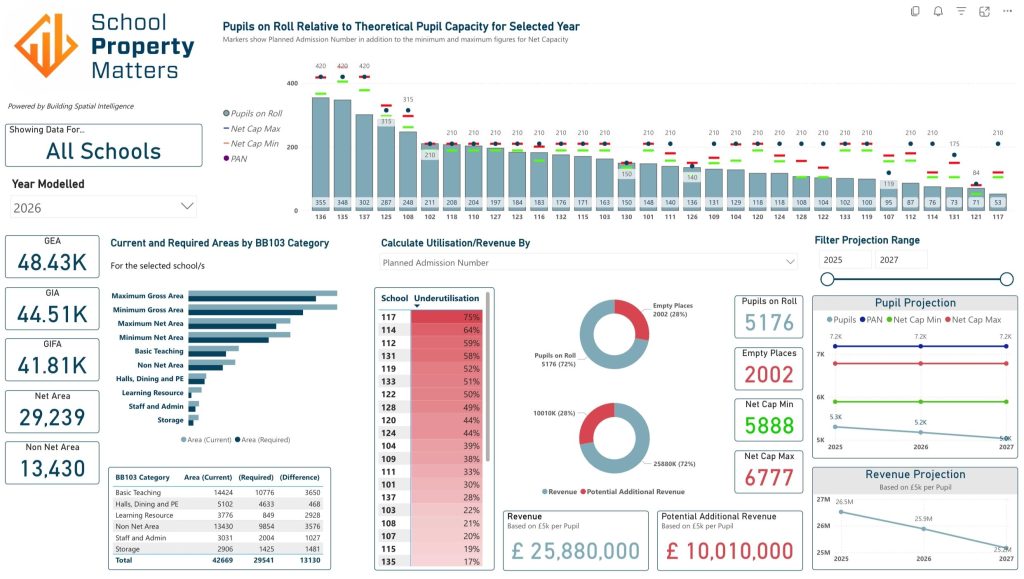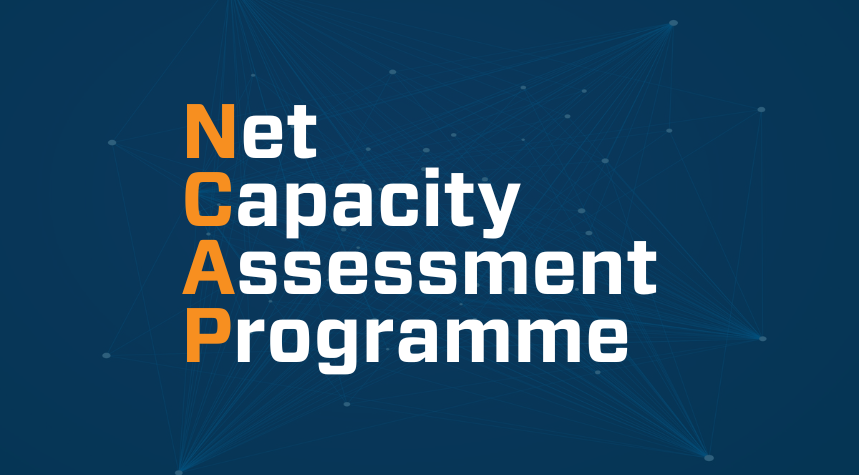The recent announcement by the Department for Education marks a significant step forward in enhancing early years education across the UK. The application window has now opened for schools to apply for a share of £15 million in capital funding aimed at transforming underutilised primary school spaces into nursery provisions.
The initiative not only seeks to deliver up to 3,000 new or expanded nursery provisions but also addresses the pressing need for accessible childcare, particularly in underserved areas. As schools prepare to bid for this funding, understanding the implications and aligning with community needs will be crucial for success in securing funding.
- Key Takeaways from the Announcement
- Understanding the DfE’s Capital Grant Guidance
- Gaining a Clear Understanding of Capacity is Key
- Early Engagement: Maximising Your Chances of Success
- The Importance of a Detailed School Capacity Report
We’ll start by looking at the key takeaways from the announcement and how schools can tailor their bids to meet the DfE’s criteria in order to successfully navigate this expansion opportunity.
Key Takeaways from the Announcement
- Funding Opportunity: Schools can bid for a share of £15 million in capital funding to create or expand up to 300 nurseries in the first round.
- Government Goal: The initiative aims to ultimately deliver 3,000 new nurseries by utilising spare spaces in primary schools, enhancing early years education access.
- Start Planning Now: The government has urged schools to engage with local authorities, governing organisations, and stakeholders to discuss pupil place planning.
- Commitment to Accessibility: The program aims to improve access to early years provision in disadvantaged areas, ensuring that quality childcare is available for all families.
- Timeline: Successful bids will be awarded funding in Spring 2025.
Understanding the DfE’s Capital Grant Guidance
For schools and trusts applying for the School-Based Nurseries Capital Grant 2024-2025, the Department for Education has laid out key guidance to help ensure that applications are well-prepared and meet all eligibility requirements. Below are the crucial points schools need to consider:
Eligibility and Funding
To be eligible, schools must fall within specific categories, and the funding is designed to help expand early years provision using existing space.
- Open to state-funded primary-phase schools in England that already provide early education, such as a reception class.
- Up to £150,000 per project is available for capital expenditure only.
- Projects must utilise surplus space within existing school buildings.
- Nurseries are expected to be operational by September 2025.
Application Process
The application window is brief, and schools must ensure they are registered and ready to submit their application before the deadline.
- Application window: 17 October 2024 to 19 December 2024 (closes at 12 midday).
- Schools must apply via the online application service.
- Application forms must be submitted with the following mandatory documentation:
- Floor plans and scope of work
- Photographs
- Cost plan or assessed competitive quotation
- Summary of consultation and responses (if applicable)
- Summary of consultation and responses (if applicable)
- Applicants will be notified of the outcome in Spring 2025.
Key Requirements
Meeting the core requirements outlined by the DfE will be essential to moving forward in the application process, applicants must:
- Secure local authority support for the project.
- Obtain necessary permissions, such as from landlords or freehold landowners.
- Ensure the project meets the eligibility criteria and prepare for evaluation against the assessment criteria.
- Provide a detailed breakdown of project costs, including risks identified with the project.
Assessment Criteria and Weighting
The DfE will assess each application based on several key factors. Understanding and meeting these criteria will be critical to securing funding.
- Project overview and value for money account for 35% of the assessment.
- Local need for childcare provision is weighted at 25%.
- The approach to early years education will also be evaluated, making up 25% of the assessment.
- Deliverability and sustainability of the nursery provision accounts for the remaining 15%.
Important Considerations
Careful planning and evaluation of both space and community needs will strengthen your bid and improve your chances of success.
- Schools should thoroughly assess the suitability and condition of surplus space.
- Consider local demand for early education and childcare to strengthen the case for funding.
- Ensure the project aligns with the school’s strategic objectives.
- Be aware of the statutory and regulatory requirements for school-based nurseries.
Download the full School-Based Nursery Capital Grant 2024 to 2025 guidance document.
Gaining a Clear Understanding of Capacity is Key
The DfE’s criteria make it clear that understanding a school’s true capacity—both current and projected—is critical to securing funding. To secure funding for new or expanded nursery spaces, schools must provide clear evidence of their capacity to accommodate the proposed number of places. This involves showcasing existing capacity or outlining a plan to create additional space within their current buildings.
Schools should begin by conducting a thorough assessment of their facilities to identify underutilised areas that can be repurposed for nursery use. This means creating detailed School Capacity Reports that map out both current and forecasted usage. By analysing this data, schools can pinpoint spaces that are not being fully utilised and determine how they can be adapted to meet the requirements for a nursery expansion.
Demonstrating that adequate space exists, or that it can be created, is essential. However, ensuring space suitability for early years provision isn’t just about repurposing areas; it’s about having a strategic vision for how this expansion fits within the broader school capacity and operational planning. To help with this, our School Capacity dashboard provides an at-a-glance view of both current usage and future capacity, allowing schools and trusts to make informed, strategic decisions.

In addition to analysing an individual school’s capacity and underutilisation, our ‘Trust on a Page’ dashboards also empower trusts to identify potentially missed opportunities across their entire estate. This comprehensive overview enables trusts to strategise effectively, ensuring that all available resources are optimally utilised, thereby supporting their broader educational objectives and enhancing overall efficiency. By presenting a clear, data-driven understanding of both present and future capacity, schools can strengthen their applications and show a commitment to sustainable growth that aligns with the grant’s objectives.

Early Engagement: Maximise Your Chance of Success
The government has emphasised the importance of schools starting early discussions with local authorities, governing bodies, and stakeholders as they prepare their bids. Schools should focus on key areas such as pupil place planning, local childcare sufficiency, and the logistics of setting up and running new or expanded nurseries.
This means schools need to actively engage with:
- Local Authorities: To assess demand for childcare and early years provision in the community.
- Governing Bodies: To align with strategic planning and ensure long-term sustainability of the nursery.
- Wider Stakeholders: Including parents, community groups, and education professionals, to gather input and support for the proposal.
A critical part of this preparation involves implementing a forecasting strategy to gain a clear understanding of future capacity requirements and expansion opportunities. By analysing data on population trends, local birth rates, and predicted demand for nursery places, schools can better anticipate how their spaces will need to adapt in the coming years. A robust strategy enables schools to plan ahead, identifying where additional capacity may be necessary and ensuring their bids reflect forward-thinking, sustainable growth.
A well-devised forecasting strategy also enables schools to evaluate the potential impact of future changes, such as an increase in nursery hours or shifts in local demographics. This strategic insight shows the Department for Education that the school is not only prepared to meet current needs but is also equipped to manage and adapt to evolving community demands. By using a data driven approach to inform these strategies, schools and trusts can strengthen their proposals, enhancing their chances of securing the funding needed for expansion.
The Importance of a Detailed School Capacity Report from School Property Matters
When bidding for funding to expand or create new nursery spaces, having a clear, data-backed understanding of your school’s capacity is essential. A detailed School Capacity Report provides the foundation for making a strong case in your bid, offering a thorough analysis of how your current facilities are being utilised and where space can be repurposed for nursery provision.
In order to carry out a detailed School Capacity Report, the school must have a CAD floor plan. If this isn’t already available, School Property Matters offers a comprehensive CAD floor plan service to ensure accurate and up-to-date visual representations of the school layout.
School Property Matters’ tailored solutions help schools and trusts accurately assess their existing capacity and forecast future needs. Our capacity reports include an in-depth evaluation of space utilisation, identifying areas of underuse that could be reallocated for nursery spaces. This ensures schools can present a well-rounded, evidence-based proposal demonstrating both current availability and long-term sustainability.
With our expertise in school capacity planning, we equip schools, multi-academy trusts and single-academy trusts with the data they need to meet the Department for Education’s criteria, showcasing a realistic and strategic approach to expansion. This detailed insight is crucial for putting forward a compelling bid, as it not only shows that the school is prepared to meet local demand but also highlights a proactive plan for the future.
Find out more about how School Property Matters can assist you in securing the funding you need. Get in touch with our team today.





